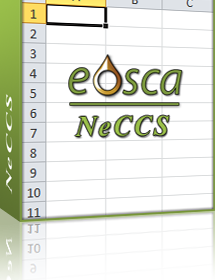Description
EGEST allows a first pass screening assessment (Tier 0 & Tier 1) of inhalation and dermal exposure together with environmental discharge assessment for substances with a view to help fulfilling the requirements of the REACH legislation.
Why are Exposure Scenarios required?
The EU Legislation for the Registration Evaluation, Authorisation and Restriction of Chemicals, REACH, is the main tool for regulating chemicals manufactured or imported in the EU. There are several processes enshrined within the REACH legislation:
- Registration & Evaluation
- Authorisation
- Restriction
- Harmonised
For a given chemical from a given manufacturer/importer the REACH requirements depend upon:
- Annual tonnage
- Classification (ie: hazard data, whether a SVHC, classified as dangerous, etc)
- Use - exemptions, derogations, requirements for intermediates, monomers, polymers, etc
As part of the Registration process it is necessary to compile a database of information in IUCLID V, and to carry out a Chemical Safety Assessment (CSA) and write a chemical safety report (CSR) for certain substance categories.
Risk assessments are required covering the life cycle of the substance.
The main elements of a risk assessment are a hazard assessment, an exposure assessment and a risk characterisation.
Various tools are involved in making an exposure assessment. It is normally necessary to communicate with downstream users to obtain the necessary information.
- Mapping known uses to REACH Use Descriptors (SU, PC, PROC & AC codes) and Environmental Release Categories (ERC codes).
- Generic Risk Assessments
- Specific Risk Assessments
The EGEST report should help to map known offshore uses to use descriptors and environmental release codes. Relevant codes are included in the tool. If more codes are required please advise EOSCA.
The EGEST Excel based tool should also help to perform generic risk assessments for the offshore use of oilfield chemicals. It does not cover earlier phases in the life cycle such as manufacture and formulation which should be covered elsewhere..
Who is it for?
The tool is designed to be used by chemical suppliers, operators and other chemical users working with exploration and production chemicals in the North Sea. A knowledge and background in occupational hygiene and environmental regulations is required to run the tool
What authority does it carry?
The development of the software was commissioned by EOSCA, and their developers BMT Cordah have followed the ECETOC TRA for human health exposure assessment and the CHARM Model for the environmental assessment of discharges directly to the sea. The results can be used to support applications by Downstream Users within REACH back up the supply chain for incorporation into Registration Dossiers for substances being submitted to the European Chemicals Agency, ECHA.
What do I need on my computer?
EGEST is a spreadsheet model designed to run on Microsoft Excel 2003 or 2007 able to be run on currently supported versions of Microsoft Windows.
Minimum Requirements
EGEST has been developed to run on supported Microsoft Office software Excel 2003 and 2007. Other spreadsheet softwares are untested. EGEST uses macros within the spreadsheet and the version of Excel used must accept the operation of macros.
Other installation requirements (client)
EGEST will display best on a 1024x768 (or higher) resolution display, with 256 colours. The file size is marginally more than 1 Mb.
Licence Agreement
No licence agreement as such is required. The limitations to the use are given however, under EGEST Licence Agreement in the Navigation Frame. The Disclaimer within the spreadsheet also indicates user requirements.
Training
No training is presently available for EGEST. It is hoped that the User Guide within the speadsheet is sufficient to allow Exposure Scenarios to be generated. Please contact EOSCA to discuss the possibilities for any training required.


